Day of the Beast 4K UHD Review
- Gabe Powers

- Mar 22, 2021
- 6 min read
Updated: Jun 11, 2021

Severin Films
4K Ultra HD Release: March 30, 2021
Video: 1.85:1/2160p/Color
Audio: Spanish DTS-HD Master Audio 5.1 and 2.0 Stereo; English DTS-HD Master Audio 2.0 Stereo
Subtitles: English
Run Time: 103 minutes
Director: Álex de la Iglesia
When a rogue priest (Álex Angulo) discovers the exact date the Antichrist will be born, he enlists the help of a Death Metal record store clerk (Santiago Segura) and a cheesy TV psychic (Armando De Razza) for an urban spree of sacrilege in order to prevent the Apocalypse by summoning Satan himself. (From Severin’s official synopsis)

Following decades of political tyranny and strict censorship under Generalissimo Franco’s regime, Spain arrived late to the horror scene and, like Italy, its output slowed during the home video era. Unlike Italy, the country rebounded from its slump and, with the help of international critical acclaim and DVD sales, it became an enduring force in post-millennial horror. Despite being a major player, Álex de la Iglesia never really got proper credit outside of Spain, where he was and continues to be a very popular filmmaker. This is might have been due to his movies being less genre specific and goofball than the melancholic shockers made by Jaume Balagueró and Alejandro Amenábar, though that doesn’t exactly explain why Nacho Vigalondo and Paco Plaza found big stateside success making similarly high-concept genre-benders. Even a Pedro Almodóvar pedigree, a couple of medium-budget, English-language features (Perdita Durango [aka: Dance with the Devil, 1997] and The Oxford Murders [2008]), and heaps of praise from champion of Mexican, Spanish, and Hollywood cult cinema Guillermo del Toro haven’t made him a household name outside of the most ardent American cult fan households.
De la Inglesia came onto the scene early with a silly, nihilistic, and socially savvy dark comedy called Accion Mutante (aka: Mutant Action, 1993), followed by directing work on an arcade video game, Marbella Vice (Spanish: Marbella antivicio, 1994), but it was his second feature, 1995’s Day of the Beast (Spanish: El día de la bestia), that set him afloat as a leader in Spain’s cult and horror renaissance. It is in many ways still his quintessential and best movie, exhibiting his unique brand of dark comedy alongside his affinity for baroque, Gothic horror visuals and clever cultural literacy (Day of the Beast references everything from fairytale lore to American underground horror and the most classic of classic Spanish literature, Miguel de Cervantes’s Don Quixote). Some of his later work might have a spicier wit (El Crimen Perfecto [aka: The Perfect Crime or The Ferpect Crime, 2004] in particular), grander ambition (Perdita Durango), and richer visuals (check out his recent TV series 30 Coins [Spanish: 30 Monedas, 2020]), but none bring these strengths together with as much youthful zeal as Day of the Beast, nor do are they based on such a clever, simple, almost Monty Python-esque premise (that being sweet-natured, naive man of the cloth must learn to sin with the help of a misfit record store clerk and charlatan spiritualist).
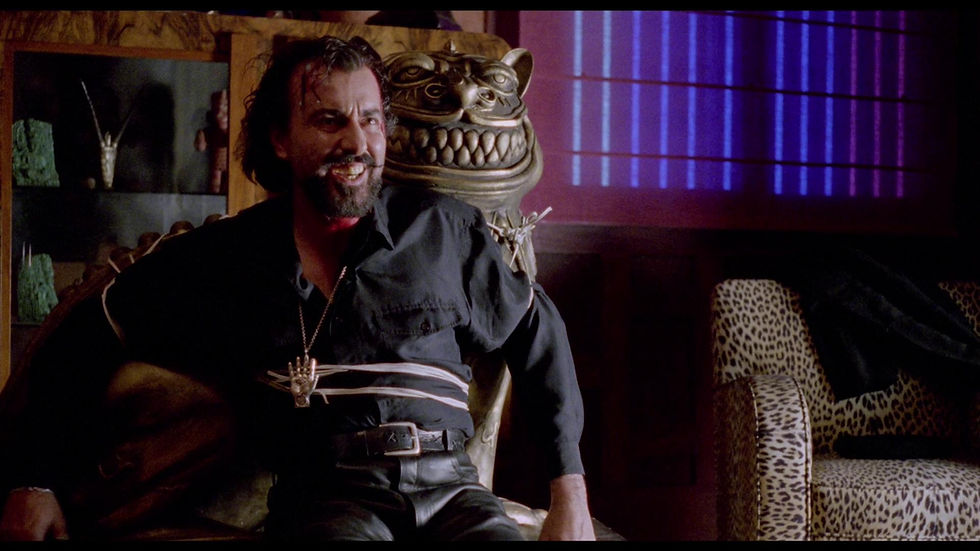
As to its own cultural caché, aside from being a turning point for Spanish filmmaking, Day of the Beast is unique to the Catholic horror canon, because it isn’t a puritanistic pro-Catholic screed, nor is it a vehemently anti-Catholic statement. It makes jokes at the expense of the Church and its dated world outlook, but also ultimately supports the ideas of belief and religious virtue, even more or less converting Santiago Segura’s self-professed Satanist into a hero for the cause by the film’s end. Unlike Acción Mutante and La comunidad (aka: The Common Wealth [it’s a pun], 2000), I’m not convinced that Day of the Beast was designed to make any particular political statement, though it clearly conveys a general mistrust of spiritual guides, especially those with TV careers. De la Iglesia is having fun subverting the rules of dogma, laughing at zealotry, and twisting his audience’s expectations with shifts into slightly more somber dramatic territory as the priest’s desperate attempts to stop the apocalypse require darker and darker actions (not that it ever stops being funny). Even early scenes of arbitrarily abusive cops seem to be an indication of the Antichrist’s rising power, alongside casual murder and missing babies, not a direct statement on fascist power. None of this, of course, stopped the film from being controversial with religious types, nor was Pedro Almodóvar – himself a magnet for controversy – willing to lend his name as producer out of superstition.
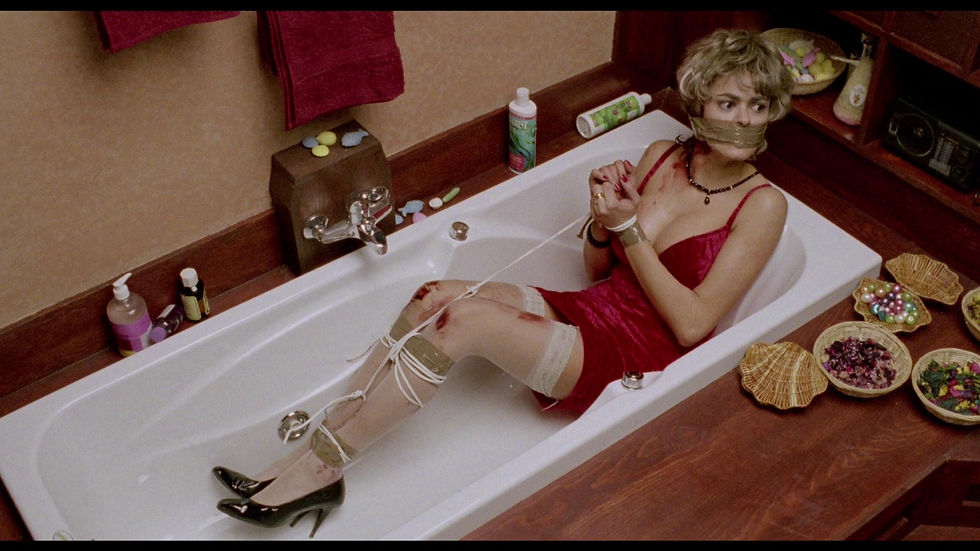
Video
Day of the Beast is among the most sought-after cult titles on Blu-ray. In fact, basically all of de la Iglesia’s early filmography has been missing on Blu-ray. Fans with region free players had two options – a Spanish disc from Fox or a German disc from Anolis, which was released in limited, 2-disc, and standard editions. Stateside, there wasn’t even a DVD release, despite reasonably strong rental availability on VHS in this country (at least in my experience). Severin Films has gotten their hands on the rights to release the film in North America, but, given how much time has passed, they’ve opted to release the film on both Blu-ray and the next generation format, 4K UHD. This embarrassment of riches is made even better by the presence of a 4K restoration of the original negative, which is also being used for DLP screenings. The resulting 2160p, 1.85:1 transfer is, based on my limited knowledge of de la Iglesia and director of photography Flavio Martínez Labiano’s intended color timing, a very good representation of this low-ish budget feature.
I do not have the Fox & Anolis BDs on hand for a direct comparison, nor am I able to get screencaps off of the UHD disc. The images on this page are representative of the included Blu-ray copy and, as such, they illustrate the color quality, clarity, and levels of the 1080p transfer without the added value of the higher detail and HDR boosts of 4K. The 2160p transfer maintains the grit and grain that is built into the darker and naturally lit sequences without additional noise, blocking, or color bleeding, outside of some effects sequences, which are understandably chunky and jagged, because they were composited using PAL video (according to Labiano’s interview at least, they are, at the very least, lower resolution). The same thing goes for some of the wide-angle nighttime exteriors, which have suffered from blooming edges and a dip in clarity on every version of the film I’ve ever seen.
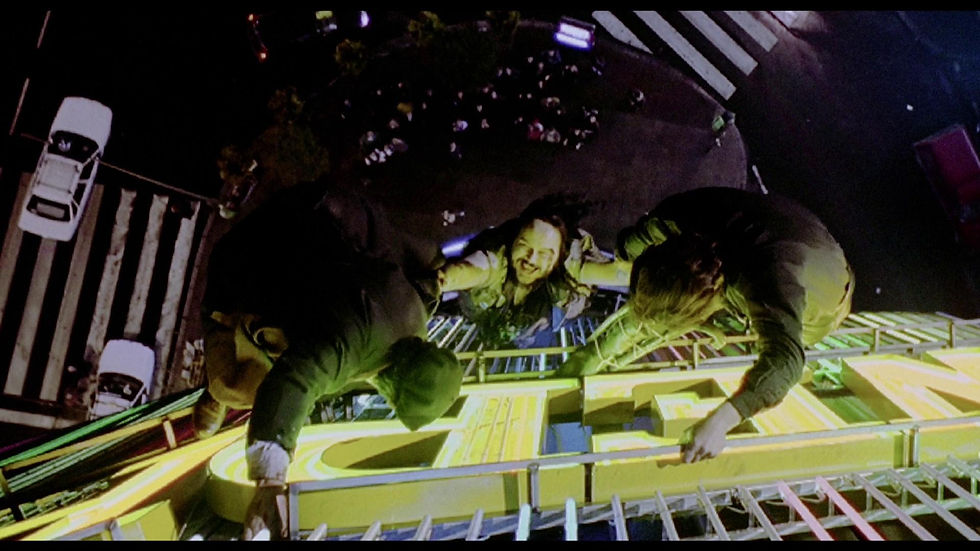
Audio
The 4K UHD and BD discs both come fitted with three audio options – Spanish original 2.0 stereo, Spanish remixed 5.1, and English dub 2.0 stereo – all in uncompressed DTS-HD Master Audio. Considering that the movie was filmed in Spanish with a Spanish-speaking cast, you’re probably going to want to ignore the English dub, which leads you to decide between an authentic, though limited track, and a respectable remix. I opted to watch the majority of the disc in 5.1, simply because it was so much louder than the stereo mix. It’s a bit on the echoey side, but benefits from a centered dialogue track and strong LFE enhancement. Dialogue and effects are simple enough that the advantages and disadvantages are best heard in Battista Lena’s score and the various metal & industrial music, including Def Con Dos’ title song (apparently, the production couldn’t get release rights for the Ministry songs they wanted to use).
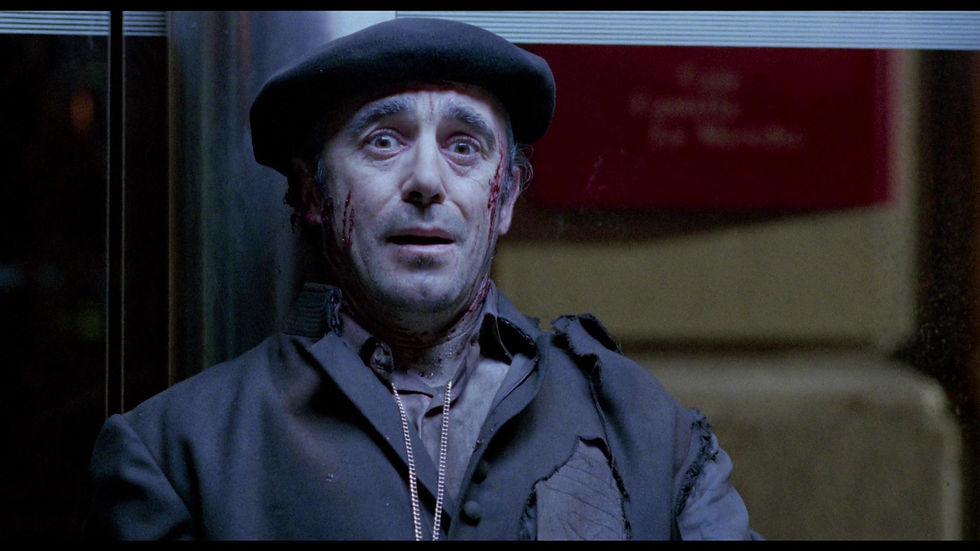
Extras
Disc One (4K UHD):
Trimark and original Spanish trailers
Disc Two (Blu-ray Copy):
Heirs of The Beast (80:53, HD) – A full-bodied, feature length retrospective documentary by Diego López and David Pizarro (the press release claims it is a 2020 release, but it seems to have been made in 2016) on the making of Day of the Beast, the state of Spanish cinema at the time, and the film’s cultural impact. It includes clips from the director’s earliest movies and interviews with people that worked on the film, as well as interviews with a number of de la Iglesia’s contemporaries, like Jaume Balagueró, Paco Plaza, and Nacho Cerdà. This documentary helped to fill in a lot of the cultural meaning I’d missed as a viewer who is largely unaware of the area’s social and economical politics, such the Plaza de Castilla as Satan’s temple, because of what the towers represented to the Spanish public. On-set stories about working with the goat are particularly funny.
Antichrist Superstar (28:11, HD) – The first of Severin’s original extras is a lengthy interview with de la Iglesia, who discusses the inception and inspirations behind Day of the Beast, the cast & crew, the metal music, and shooting on a low budget.
The Man Who Saved the World (19:58, HD) – A new interview with Armando De Razza about the actor/singer’s early career in film, his Day of the Beast character, and on-set mishaps.
Beauty and the Beast (17:09, HD) – Actress Maria Grazia Cucinotta recalls working on the film the year after appearing in Michael Radford’s Oscar nominated Il Postino (1994), enjoying the experience, despite being constantly frightened, and her character.
Shooting the Beast (2:36, HD) – The final Severin interview is with director of photography Flavio Martínez Labiano, who talks about designing the film’s look, working from storyboards, and special effects.
Mirindas Asesinas (12:28, HD) – De la Iglesia’s 1990 short film, which got his foot in the door, so to speak. It’s a stark and grainy, black & white expressionistic piece in the vein of David Lynch’s Eraserhead (1977) or Shinya Tsukamoto’s Tetsuo: The Iron Man (1989), though on a smaller scale.
Trimark and original Spanish trailers
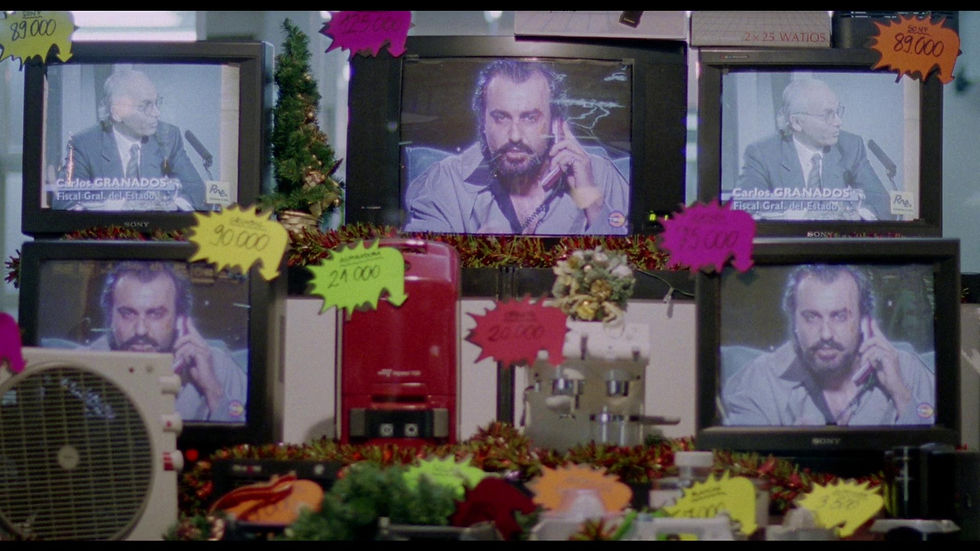
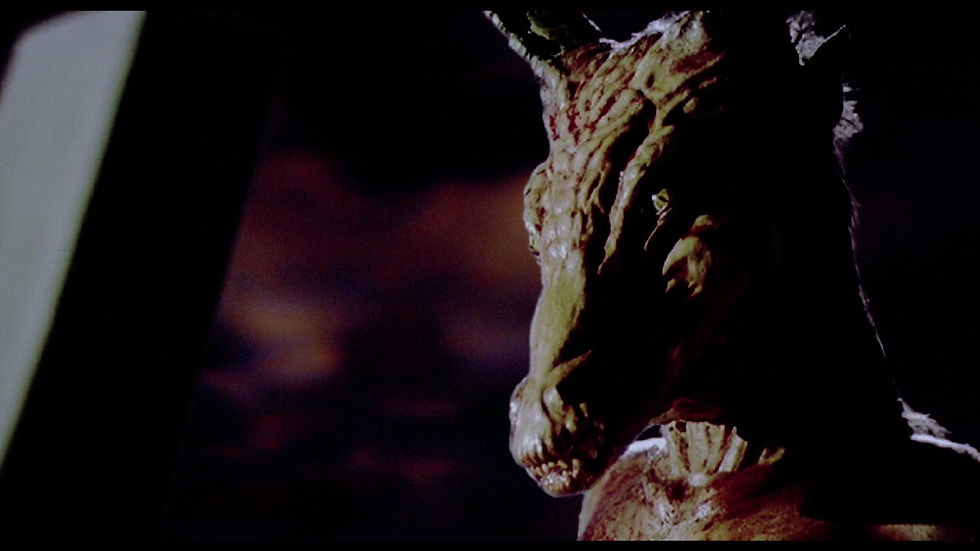
The images on this page are representative of the remastered 2021 Blu-ray, but not representative of the 4K UHD image quality.









Comments